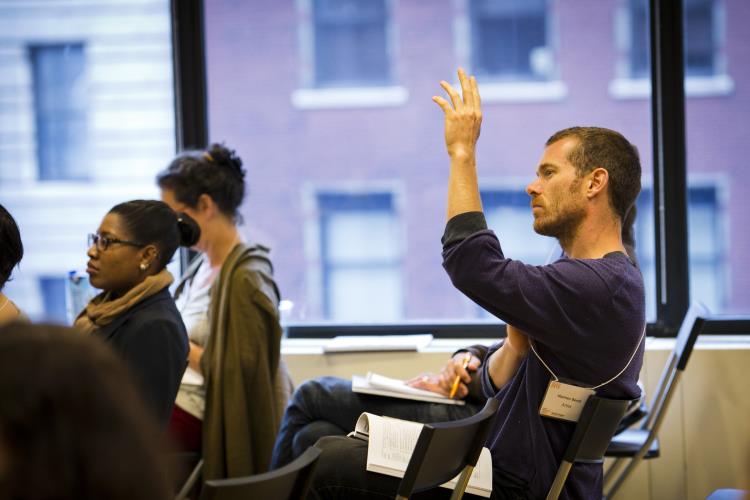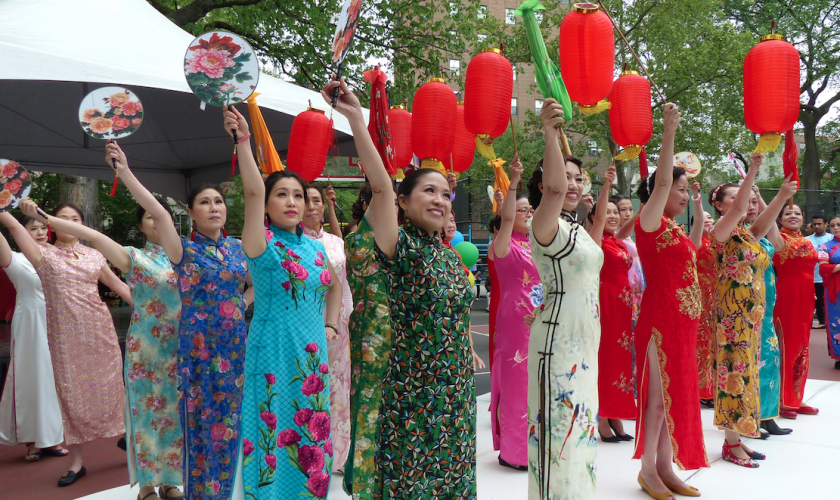Bachelor's degree with a double major in Chinese and Art in Peking University. Master of Art and Administration in New York University. She has served in the Macao Cultural Affairs Bureau, the New York City Department of Cultural Affairs and the Museum of Chinese in America, working as art administrator and curator. She is now working as an art educator and administrator in New York, as well as an independent curator and writer.
If we were to compare the art environment of a city to an ecosystem, then the one in New York is probably a tropical jungle. New York’s diverse art environment and experiences make the city a fascinating destination for artists and art lovers. To facilitate such environment, a diverse pool of financial supports is very crucial.

Seminar organised by Lower Manhattan Cultural Council Photo courtesy of Lower Manhattan Cultural Council
There are five districts in New York, each with a district-level art council that is set up to drive art and cultural development. They are important actors in providing support for small art organisations and artists. For instance, we have Lower Manhattan Cultural Council in Manhattan, Queens Council on the Arts in Queens, etc. These councils are non-profit organisations with close partnership with the government. They receive resources from the city hall, state government, and many other channels. The resources are distributed to small and mid-sized organisations and individuals. Many local artists in New York rely on the councils’ support to make their first step in the art industry.
The financial subsidy that these councils offer comes in small amount. Lower Manhattan Cultural Council’s highest grant, the Creative Engagement grant, is only USD8,000. But this also means that more people can be benefited by the grant. Each year, hundreds of art projects receive the Creative Engagement grant. It is not difficult to apply for the grants as there is no over-the-top requirement on work experience or organisation scale. Since these councils target upcoming artists and small organisations, they focus on teaching artists how to be sustainable in the industry. They regularly host free workshops and lectures in support of art industry workers’ career development. All the district councils work closely with the New York City Department of Cultural Affairs to coordinate their support for artists in terms of the subsidy amount, target audience, and subsidy application periods. For instance, if it is confirmed that an artist will receive subsidy from the city government, he or she could not apply for financial support from the district council. If an artist could not get subsidy from the government, then the application for subsidy from the district council starts after the government announces the beneficiaries. The coordination brings relevant support to individual artists and art organisations in different stage.

Local activity subsidised by Lower Manhattan Cultural Council Photo courtesy of Lower Manhattan Cultural Council
In the U.S., there are organisations that are called fiscal sponsors that support art startups. Their function is not to provide subsidy but to give NPOs recognition. In general, sponsors will need to provide financial support for registered NPOs to receive tax exemption or reduction. But many small-sized art organisations might not have the registered status because there are a lot of administrative, legal and tax requirements. These fiscal sponsors spare art startup organisations from spending lots of time and expenses in trying to get more social resources. These organisations can sometimes be government’s collaborating partners and train industry workers to drive the development of artists and groups. New York Foundation for the Arts is one of these organisations. It offers incredible support to the local art community, such as helping Chinese industry workers overcome language barrier and organising Chinese workshops and seminars, etc.
New York’s support system and subsidising organisations hold significant value in driving the development of the art and cultural industry. This support system was established between the 70s and 80s in response to the demands coming from art and cultural communities. After decades of development, the support system finally matured to today’s scale. These organisations and system do not just provide art communities with crucial financing, but also make contribution to administrative and professional development, serving as important art and creativity incubators in New York. On the other hand, these organisations are NGOs at nature, meaning they reduce government influence in art creation. The diverse art environment in New York can thrive in the city thanks to the financial support system and less government intervention.